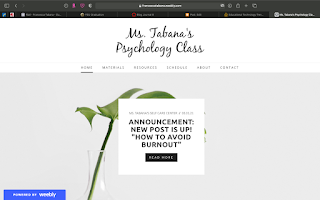Copyright is something that I had been cognizant of since middle school, particularly as a band student. Since copyright laws are put in place to protect one's creative work, this made distributing copies of copyrighted musical literature almost near impossible without somehow having to pay the creator of the piece. Fair use makes this whole process a bit easier for educators especially, as it is essentially a set of guidelines that allows educators to produce copies of all copyrighted material (stipulations still exist in regards to quantities and targeted audiences) for nonprofit educational intents and purposes. As a professor, this would probably not be something with which I might find myself highly preoccupied; I would have students purchase any necessary text and would upload any supplemental material (under fair use). As a music educator (which was my childhood dream job), I would have definitely had to spend a lot of time ensuring that my materials were purchased in a timely fashion so that I could have them shipped to me and still have ample time to make copies for distribution for my students.
With the growing, widespread implementation of technology in the classroom, problems are bound to arise. Academic dishonesty is probably the biggest concern among educators and parents regarding allowing their students to use technology for coursework. This is because there exists a multitude of ways in which a student may be able to search and find answers instead of providing original thoughts and ideas. This could be remedied by implementing software such as HonorLock or ProcterU, in which the student is proctored while they take assessments. Another pervasive issue within the world of technology is cyberbullying. Far too many children and adolescents have harmed themselves and others from bullying, and the internet is infamous for being the place where nothing ever gets truly deleted, making it the perfect place for bullying to thrive. A potential solution to preventing cyberbullying is to foster a positive, inclusive, and accepting environment in which students are encouraged to speak their thoughts and express themselves while always treating others with respect and dignity. when children feel safe and secure in both themselves and their environment, I think that it's not a stretch to believe that they would be less likely to feel the need to bully another student.
While completing the Newsletter Design assignment, I was at first a little apprehensive only because I haven't had to create a creative document in such a long time! I've only been using Word to type up essays for academic assignments, so it had definitely been a while since I even had to use the Design tab, much less WordArt (I didn't even know where to find it at first so I just searched in Word). However, once I got in the groove, it all started coming back to me and I began to feel much more acquainted with designing. I could definitely improve a few areas of my newsletter, such as spacing out my images more and not including so much bare space. Overall, this assignment served as a nice refresher for my designing skills which will definitely serve me well in my teaching career, and I'm quite content with the way my newsletter came out! I was a band kid all throughout middle and high school and had to bring home something similar to my parents, so it wasn't hard for me to picture myself in the position of director this time around!
Here is a screenshot of my Newsletter for a Music Educator :)


Comments
Post a Comment